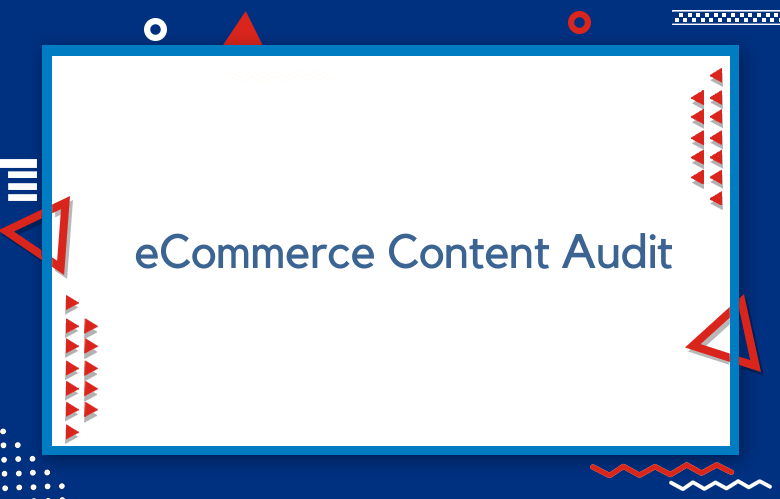How to Conduct an eCommerce Content Audit

The eCommerce content audit is the process of checking all the pages on your site for quality, accuracy, and consistency. It’s a great way to make sure your customers are getting the best possible experience from you. This article will cover how to do an eCommerce content audit and what tools can be used.
eCommerce Content Audit is a process that can evaluate the strengths and weaknesses of an online store’s content.
Businesses must understand what their customers are looking for, so they can provide them with informative and engaging information.
A successful audit will help you grow your business by improving customer relations through more effective communication between you and them.
The first step of an eCommerce Content Audit is to assess the quality and quantity of your content. To do this, you need to feel how many pages are available on your website. A good starting point would be the homepage category.
Before you start to rewrite your content, you must take the time to audit everything.
What is eCommerce Content Audit?
An eCommerce Content Audit is a process for finding out what to do with your product information. It can be used for analyzing the content on your website, blog, or even in social media posts.
Essentially, an eCommerce Content Audit is a comprehensive review of your company’s website content. It includes everything from product descriptions to blog posts and much more.
A content audit is a way to inventory your store’s existing product descriptions and improve them.
eCommerce content is the heart of what you do. You need it to be engaging, interesting, and informative if you want your eCommerce store to succeed. But keeping up with all of this takes work!
The eCommerce Content Audit is a checklist of the essential elements every online store needs to rank well. It’s based on over 100 data points that helped my clients improve their conversions.
eCommerce Product Content Quality Audit and Enrichment
Do you have any concerns about the product content of your eCommerce store? If so, I can help. I can work with you to create new products and enrich existing ones.
It would help if you had an effective digital marketing strategy in place. You can start by making sure your product content is optimized for search engines and social media channels.
The quality of the content in your store is essential to ensuring that customers find what they need and buy from you. Content should be well-written and organized, so it’s easy for visitors to navigate.
How to Audit Your Ecommerce Content
Audit your content for relevance, accuracy, and unique violations. Content audit the following main areas:
Ecommerce site content to verify compliance with legal or other rules related to products sold on the site, such as health and safety regulations, product specifications, and so-called hidden surprises about uploading photos of packages.
They published customer reviews that evaluate its goods and services for accuracy and completeness to improve their quality. If you remove or edit any customer reviews, this needs careful consideration and approval by the brand owner before publication.
Your website home page design; what it says about your company; possible textual problems, e.g., text exceeding commonly accepted limits for spacing between words) typos.
- Run a ‘Find Broken Content’ report to identify broken links.
- Gather all the broken links and create static content for them.
- Implement a Progressive enhancement framework to make sure that if you lose your content, it may still be usable by visitors with cached versions.
- Track errors with Google Analytics. By using this, you can find insight into what potential difficulty points are keeping people from converting because you can see where they are dropping off in their customer journey based on “What caused them to exit?” And then be able to take corrective action accordingly.
- Audit your site’s performance using an analytics app like Google Analytics or WebPageTest – Tools should tell you how fast pages load so slow pages.
Auditing content is a critical part of maintaining an eCommerce website. Too much or too little content could leave customers confused and unable to find the information they want. To audit your e-commerce content, look for empty pages that can be filled with new information.
Look for pages that are linked incorrectly or are out-of-date; typically, these are marked by broken links, inaccurate data, or dates more than one year old. If you notice many empty pages, it may indicate underdeveloped sections on your site. Adding new articles will boost visitor numbers while lowering bounce rates on individual page views.
- Optimize on-page SEO on your site to improve rankings in SERPs.
- Scan for on-page problems with the webmaster tools toolbar plugin, e.g., broken links, broken HTML or missing CSS stylesheets, duplicate content pages, etc.
- Ensure that all of your images are optimized and have SRCs properly referenced so Google can find them more easily without slowing download times for your site visitors. This will also result in improved rankings in SERPS through page speed metrics algorithmic algorithms.
- Evaluate syndication opportunities by guest blogging or writing blog posts around topics related to your niche/products/services – it’s a great way to generate traffic.
Often the audit process is a one-time or annual task. Quarterly audits can also be necessary when systems are live and being modified
Regular content audits should include these five steps:
- Conduct a Website Audit – Inspect Homepage, Product Detail Pages, Shopping Cart Page, Checkout Process, etc
- Review Content on Common Tools Like Google Search Rankings and Social Media Engagement to See Where Your Infographic Can Be Featured for Better Exposure in Search Results and Shareability.
- Create a Content Marketing Calendar – Decide monthly who will be updating the content so you don’t waste time with content that no one wants to post. Determine what topics need coverage, then draft.
How to Develop an eCommerce Content Strategy
An eCommerce content strategy is a series of actions you put in place to maximize the potential of your company’s web pages, specifically your product pages. For example, if an organization has $100,000 in sales online and targets $500K in sales to rank on page one for keywords such as “rug cleaner,” that’s understood as part of their eCommerce content strategy.
The best approach to developing an eCommerce content strategy is to ensure that each page has these things:
Search Engine Optimization (SEO):
It would be beneficial to use keywords commonly found when customers search for goods or services and include them strategically throughout the page copy and meta tags.
One way to develop an eCommerce content strategy is to pinpoint the following themes that resonate with your customer base and what they’re likely to be searching for.
Common themes that resonate with customers include holiday shopping, gifts, back-to-school shopping, garden center equipment. Themes can also be anything related to hobbies or entertainment groups – for example, photography or video production both require materials (equipment) and professional advice (lessons).
Tracing what customers are searching for is the first step in developing a content strategy once you know who your target audience is. To do this, ensure you have Google Analytics properly installed on your website so you can track which pages are most popular among users.
Strategies for performing a content audit for an eCommerce website
- Conduct a SWOT analysis of your website
- Identify the most popular content on your site
- Rank your pages by traffic with Google Analytics
- Use Google Search Console to find broken links and errors in page titles, descriptions, or meta tags.
- Conduct a content audit
- Identify gaps in your product offerings or categories of products you don’t offer at all.
- Determine what keywords to target for SEO purposes
- Determine which pages need to be updated with fresh, new content
- Analyze the website’s content to determine its value and relevance
- Consider how your company wants to be perceived by customers and what tone is being used on the site
- Determine which pages are most popular with visitors and why they resonate with them
- Conduct a keyword analysis of the site and identify opportunities for new content creation or optimization of existing content
- Prioritize needs for new content based on popularity, sentiment, etc., then develop a plan for publishing it
- Identify the content that needs to be analyzed and removed
- Determine what type of content is necessary, such as product descriptions or blog posts
- Review all the pages on the website for broken links and errors in code
- Set goals for the audit
- Identify content types, including product descriptions, blog posts, and social media updates.
- Determine what marketing channels are used to distribute content (email newsletters? organic search results?)
- Evaluate the quality of existing content based on SEO best practices (keyword use, grammar & spelling)
- Review customer feedback on social media or in email responses
Conclusion
A content audit is a crucial step to promote your products and services effectively. This post will walk you through what an eCommerce Content Audit entails, as well as how it can help grow your brand’s reach online.
In the end, we’ll provide some suggestions for improving your existing marketing plan based on our findings from this article’s analysis of successful brands who have been using these techniques already! If you’re intended to learn more about conducting a content audit or want us to do one for you, contact us today!
Call: +91 9848321284
Email: [email protected]



